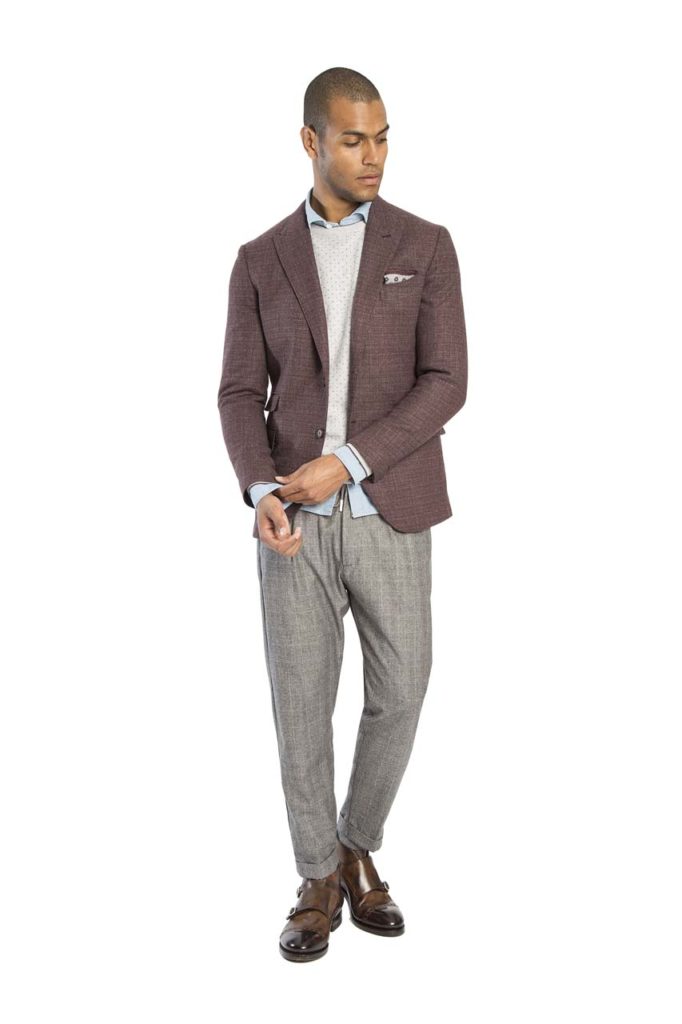HOW ERMENEGILDO ZEGNA HAS SET TECHNIQUE AND STYLE BENCHMARKS FOR MORE THAN ONE HUNDRED YEARS
BY HUNT ETHRIDGE
When you’re the best in the world, the hardest task becomes maintaining that altitude.
Started in 1910 and now in its fourth generation of family management, Ermenegildo Zegna is the largest producer of fine menswear in the world, with over 2.5 million yards of fabric created each year. Aside from selling directly to the consumer, it also supplies fabric and suits for Gucci, YSL, Dunhill, and Tom Ford its name long associated with material unmatched anywhere else. And while getting to the top is a challenge, staying there for a century takes formidable innovation. So, how does an Old World Italian firm use science and market savvy to produce pieces that prompt Alec Baldwin, for example, to offer that “I wear a Zegna suit and tie every day, pretty much… [They] have the perfect weight fabric.”?

In 1910, Ermenegildo Zegna bought his father’s textile looms near Piedmont, Italy. He then founded his own company and built a mill, Lanificio, in Trivero in the Biellese Alps. He’d learned from his dad that relationships with providers of raw materials were paramount, so Ermenegildo began sourcing the best wool from the Alps region, but also traveled as far as Australia to sample its finest textiles. He found that some Down Under sheep farms produce wool in the range of 13 microns (for comparison, the human hair is 50 to 60 microns thick), and that one farm in New South Wales produced a fleece fiber that was (and is) a world record 10 microns. With that same searching spirit, Zenga still sources mohair from South Africa, cashmere from Nepal, alpaca fleece from Bolivia, and vicuña wool from Peru.
During the 1960s, Ermenegildo’s two sons, Angelo and Aldo, gradually took over from their father and embraced the novel concept of creating awards to honor farms that produced the best raw materials. In 1963, Zenga began presenting its Ermenegildo Zegna Wool Awards in Australia. During the event, still held today, select sheep (representing only about 5% of typical flocks) are hand shorn by members of the Zenga family. e resulting 25 pounds of wool is then tossed onto a large antique wooden table and sorted into bins with the labels “legs,” “back,” and other body section indicators. The best fleece, from the shoulders and sides, is put aside to go straight to Lani cio. In 2002, the company started another award, the Vellus Aureum (or “golden fleece”), which goes to the best wool under the 13.9 micron range. As a bonus, Zegna pays the winning farms 50% above market value for such products.
All these premium source materials used to make ultralight Vellus Aureum cloth for limited edition made to order suits, of which only 50 are produced per year. A full suit of this wool weighs less than two typical dress shirts, and sells for more than $25,000 (they cannot be dry cleaned, however, and must be stored in a temperature and humidity controlled closet). Owning one has been likened to maintaining a vintage car gorgeously painstaking.
In similar idiom, Zenga created the Mohair Trophy to reward and recognize growers of South African kid mohair, as well as the Cashmere Trophy in Mongolia (until pressure from the Chinese government forced them to suspend that prize). e fourth generation of family owners and executives, including Paolo, Ermenegildo, Anna, Benedetta, Laura, and Renata, are pushing the brand in new directions. While they remain proud of selling in 80 countries and from 311 stores, their broader emphasis is on creating new treatments, fabrics, and processes. And, in order to reduce waste, the company is researching ways to color fabrics without creating toxic byproducts. To achieve this, staff members looked back into history before chemical dyes existed, and experimented with herb, vegetable, and owner based alternatives. Crocuses, for example, are used to create cobalt, while chanterelle mushrooms produce a buttery yellow. While some of the fabric technicians in Trivero are looking back, others are looking forward.

Studying the physical and chemical properties of the lotus leaf, which doesn’t absorb dirt or get saturated, led to a breakthrough in Nano technology. e resulting high performance fabrics feature a surface that ensures anti stain and long lasting properties. Zegna is also finishing fabrics with its Innovating Cool Effect, enabling dark surfaces to reflect sunlight, keeping the garment and wearer cool.
Salute to tireless innovation!
Ermenegildo Zegna
The Mall at Short Hills / 1200 Morris Turnpike, Short Hills
973.376.0061 / shopshorthills.com / zegna.us


